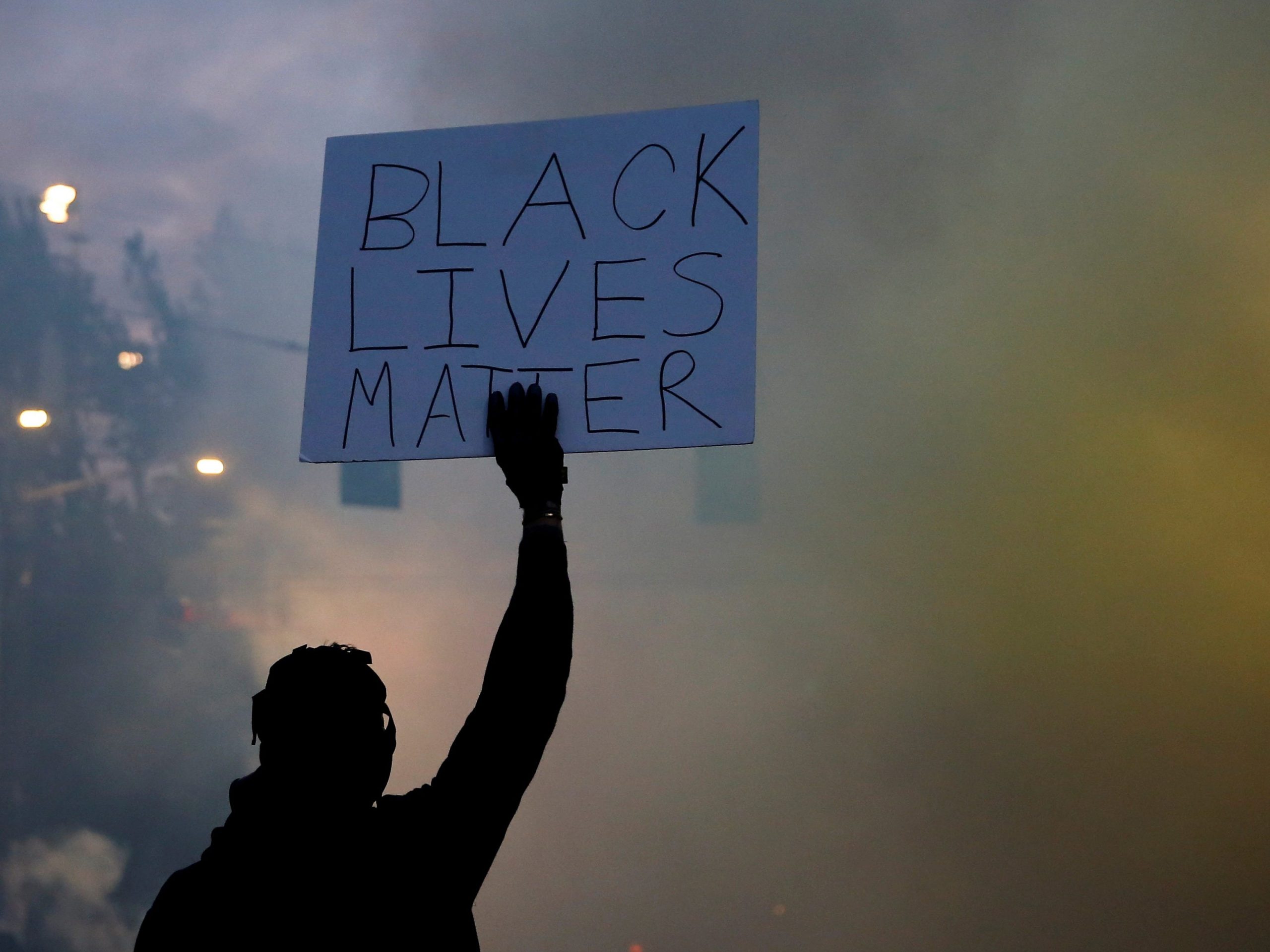- The Black Lives Matter movement began in 2013. The organization was founded in response to George Zimmerman’s acquittal in the killing of Trayvon Martin.
- Three community organizers went viral with the hashtag #BlackLivesMatter and leveraged it into the creation of the Black Lives Matter organization that has since become synonymous with the fight against systematic racism and police violence.
- The organization serves as a case study for growing a movement in the 21st century because of its community-led organizational approach and its use of social media to mobilize and connect.
- Visit Business Insider’s homepage for more stories.
The Black Lives Matter movement was founded in 2013 after George Zimmerman was acquitted of killing Trayvon Martin.

At the time, Alicia Garza, an activist, posted a note titled “A Love Note to Black People” on Facebook. The post ended with: “…black people. I love you. I love us. Our lives matter.” Her friend Patrisse Cullors added the hashtag #BlackLivesMatter, which almost instantaneously went viral.
Garza, Cullors, and Opal Tometi, a human rights activist, then took the rallying cry and leveraged it into a global, influential social justice movement that spread far beyond its own organization.
While Black Lives Matter was far from the only organization formed by community organizers in protest of Trayvon Martin’s death, it was the first to recognize social media as a necessary force in mobilizing action.

Garza, Cullers, and Tometi initially met through a national organization that trains community organizers. Tometi is credited with creating the organization’s social platforms and spearheading its initial social strategy.
Today, #BlackLivesMatter has been included in nearly 20 million posts on Instagram alone and has become synonymous with the fight against systematic racism and police violence.
The organization drew inspiration from the 1960s civil rights movement, but immediately focused on a different leadership model.

In 2014, Sarah Jackson, a Northeastern University professor focused on social movements told Politico that the civil rights movement focused on a "Martin Luther King - Al Sharpton model" of leadership. She asserted many social movements being centered around "a charismatic male leader."
Columbia University's director of African-American politics Fredrick C. Harris once wrote that the model Jackson references had been replicated countless times, but by and large, "the dependence of movements on charismatic leaders can ... weaken them, even lead to their collapse."
"Black Lives Matter activists today recognize that granting decision-making power to an individual or handful of individuals poses a risk to the durability of a movement," Harris wrote in 2015.
The Black Lives Matter movement more closely resembles Ella Baker's community-centered leadership model over Martin Luther King's.

The Black Lives Matter movement was founded by three women and has a largely community-centered leadership model, which Harris referred to as a "participatory democracy."
It more closely resembles Ella Baker's Student Nonviolent Coordinating Committee that was founded in 1960. Its campaigns were planned by the entire collective.
While Baker was associated with King's wider movement, she emphasized the importance of grassroots organizing. "Strong people don't need a strong leader," Baker famously said. The Black Lives Matter organization operates under similar principles.
"Martin didn't make the movement," according to Baker. "The movement made Martin."
Black Lives Matter's unique leadership model was further cultivated by social media.

Herbert Ruffin, a Syracuse University historian, noted that Black Lives Matter approached mobilizing the masses differently from other activist groups. Black Lives Matter was the first group to emphasize social media as a force driving change.
While other groups focused on organizing "courthouse demonstrations" and "Change.org petitions," Black Lives Matter took it one step further and created communities on platforms like Facebook, Twitter, and Tumblr, according to Ruffin.
Furthermore, social media allowed the group to organize better. The movement in the 60s needed "institutional structure to make things work ... because of the limitations of tech at the time," according to Wired's Bijan Stephen.
When Michael Brown was killed in Ferguson, Missouri in 2014, there was no institutional structure that brought thousands of protesters to its streets.
According to Ruffin, there were Black Lives Matter protesters from at least 18 cities in Ferguson. And the organization was barely a year old at the time, speaking to its rapid growth and effective use of social media.
Protests in Ferguson marked Black Lives Matter's first in-person demonstration.
Social media also propelled the movement forward. Black Lives Matter emerged as one of leading organizations following the Ferguson protests, partially due to its recognizable slogan and highly visible social media presence.

Co-founder Opal Tometi recently told the New Yorker that the Ferguson protests were the impetus for the organization's rapid growth. "Fergusons are everywhere, and we don't want to just go back home and act like this was a one-off act of solidarity. We want to do something."
According to the Pew Research Center, the #BlackLivesMatter hashtag appeared an average of 58,747 times per day in the three weeks following Brown's death. It then appeared 172,772 times the day the Ferguson grand jury decided against indicting the officers involved in Brown's death - and 1.7 million times in the following three weeks.
Social media would then become crucial in supporting future "acts of solidarity."
A 2018 study found that Black Lives Matter's social media strategy was not necessarily "designed for the specific purpose of fueling growth," but became central to the movement's growth for three reasons: it mobilized both internal activists and new activists, it built a connection between the group and other groups and movements, and it allowed activists to control the narrative by posting personal experiences from protests and the like, rather than relying on the mainstream media.
The group's visibility made it a symbol for the broader movement against systematic racism, rather than just police violence. As it grew, it became more inclusive of causes that share a "throughline of valuing black life."

The group organized and participated in hundreds of protests since Ferguson regarding police violence, including the 2015 killing of Freddie Gray and the 2016 killings of Alton Sterling and Philando Castile.
It also inspired separate peaceful protests, like Colin Kaepernick's refusal to stand during the national anthem at a 2016 NFL game.

The organization has also made a point to expand its causes and be inclusive and intersectional. It has branched out to support causes in addition to police violence, like health equity and diverse representation in the arts. Its website also prominently displays: "We affirm the lives of Black queer and trans folks, disabled folks, undocumented folks, folks with records, women, and all black lives along the gender spectrum."
The organization has "always been somewhat decentralized," Tometi told the New Yorker. "Different chapters might take on different issues," Tometi explained. "Some chapters are more focused on the education system. Some are more focused on working with sex workers who are abused."
But, according to Tometi, there is always a "throughline of valuing black life and understanding that we are not a monolith but being radically inclusive in terms of chapter makeup."
Black Lives Matter's initial fight against police brutality is currently on full display following the May 25 police killing of George Floyd in Minneapolis, Minnesota.

There are countless social media campaigns currently happening, in addition to protests worldwide.
"I am getting e-mails where people are trying to set up chapters again," Tometi said. "There is especially momentum when there is a tragedy like the ones we have witnessed in recent times. People want ... to rise up."

